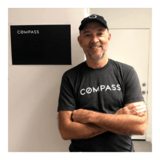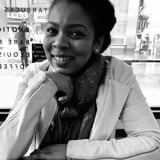Summary
In enterprise organizations, product development work, and therefore, design work, typically happens within a specific business unit or organization. Dedicated and embedded squads means there is a close and tight feedback loop between team members. But what happens when your company kicks off an initiative that spans across business units? How do you resource and run a design project with no dedicated designers? This case study will cover how we set out a vision, structured communications, built up an ad-hoc design team, shipped our first cross-organization product and all the lessons we learned along the way.
Key Insights
-
•
Unifying a sign-in experience across siloed business units requires cultural alignment more than just technical design.
-
•
An experience vision that is agnostic of technology helps align diverse stakeholders effectively.
-
•
Empowered small core teams can accelerate decision-making and maintain project momentum.
-
•
Embedding designers fractionally from different business units enables scalable design collaboration without a dedicated central team.
-
•
Rapid iterations and mixed usability testing approaches help identify issues early across modules and terminology.
-
•
Lack of prior trust among designers from different units hinders collaboration and slows progress.
-
•
Conflicting roadmaps and priorities between business units create complexity in resourcing shared projects.
-
•
Over-reliance on a single content strategist created a risky single point of failure for messaging consistency.
-
•
A formal kickoff meeting is crucial to align scope, roles, and expectations, even if delayed.
-
•
Service blueprints provide a valuable deeper view into backend systems and stakeholder responsibilities often overlooked in UI-focused maps.
Notable Quotes
"The complex problem we were solving was not really solution based at all. It was a cultural team alignment problem."
"The experience vision provided a tangible goal that everyone could work towards, focusing on the user's experience rather than the technology."
"Consistency over business unit efficiency meant choosing a unified interface over letting each business unit do their own thing."
"We formed a core task force empowered to make decisions quickly, avoiding weeks of delay waiting for formal approvals."
"I wish I’d spent more time cultivating relationships and trust with the designers embedded in other business units."
"Our content strategist was a single point of failure—when she left, we scrambled to pick up unfinished work."
"There was never an official kickoff meeting to align all stakeholders and set clear expectations."
"A service blueprint would have helped show the complex backend systems supporting what looks like a simple user interface."
"Investing time in people, relationships, and collaboration pays off in stronger teams and better user experiences."
"The work we do is fundamentally human, and humans are messy—sometimes things work, sometimes they don’t."
Or choose a question:
















More Videos

"Our shift is structural, not because of personalities — it was needed to influence earlier, more business-centric decisions."
Nalini KotamrajuResearch After UX
March 25, 2024

"Society grows great when old people plant trees they know they shall never sit in."
Dean BroadleyNot Black Enough to be White
January 8, 2024

"When we start changing our behavior, we start changing the voices and behavior around us."
Denise Jacobs Nancy Douyon Renee Reid Lisa WelchmanInteractive Keynote: Social Change by Design
January 8, 2024

"Pilots don’t need to be perfect, they just need enough moving parts to gather useful feedback quickly."
Kim Fellman CohenMeasuring the Designer Experience
October 23, 2019

"Good design is honest and yes, the Jewel e-cigarette will honestly kill you."
George AyeThat Quiet Little Voice: When Design and Ethics Collide
November 16, 2022

"You have to treat the design system like a product that everyone in your organization will use."
Nathan CurtisBeyond the Toolkit: Spreading a System Across People & Products
June 9, 2016

"We want to know agents better than they know themselves to drive tailored, contextually relevant solutions."
Greg PetroffThe Compass Mission
March 10, 2021

"Understanding culture means looking at a spectrum from global trends down to intimate communities."
Chloe Amos-EdkinsA Cultural Approach: Research in the Context of Glocalisation
March 27, 2023

"Heat maps showed users clicking on areas they thought were clickable but weren’t, resulting in click rage."
Mackenzie Cockram Sara Branco Cunha Ian FranklinIntegrating Qualitative and Quantitative Research from Discovery to Live
December 16, 2022

















